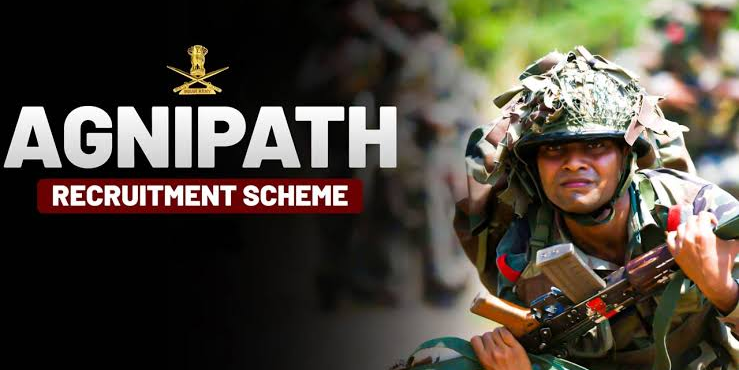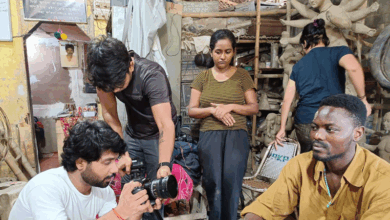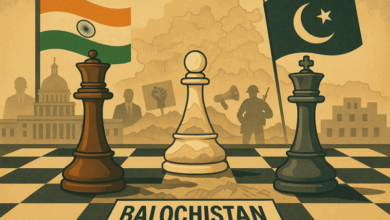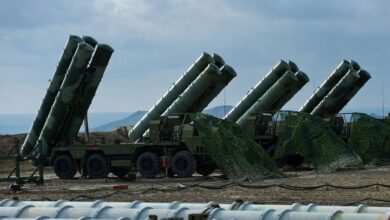The Dangers of India’s New Agnipath Military Recruitment Policy
News Mania Desk / Piyal Chatterjee / 24th May 2025

On June 14, 2022, the Indian government altered a recruitment policy in the military that had been in place for more than two hundred years. As per the new policy named Agnipath (“path of fire”), the armed forces enlist new recruits for a duration of only four years, keeping only a quarter of them for extended service. This is improbable to enhance the combat efficiency of the Indian military.
With this updated policy, the military enlists men aged 17½ to 21 as Agniveers — “fire warriors” — who undergo six months of training before beginning active service in the army, navy, and air force. These Agniveers will be in service for four years, and afterward, the military will keep 25% of them. Those kept by the military will work as “regular cadre,” who presently remain for 15 years, with chances of extending their tenure if they receive promotions.
The Indian government and other supporters justify Agnipath based on four main reasons: structural changes, financial efficiency, generating a talent pipeline, and reducing the average age of military personnel.
They contend that the previous recruitment system depended on obsolete caste and ethnic classifications. India acquired this framework from the British, who categorized specific groups — including Sikhs, Gurkhas, and Rajputs — as “martial races” and enlisted them into regiments based on region and caste. These regiments reflected the structure of the British Army, which continues to have units such as the Royal Irish Regiment and the Scots Guards. In India after gaining independence, numerous traditions continued, particularly within the Army’s infantry. Although the Air Force, Navy, and various branches of the Army now conduct national recruitment, many regiments continue to depend on local or ethnic recruitment sources. Advocates argue that this method embodies colonial strategies of division, rather than addressing the requirements of a contemporary nation-state. They contend that India must discard these legacies and substitute them with ethnically neutral, numbered units.
They also emphasize the unsustainable expense of the earlier model. Historically, veterans were provided with not only salaries but also pensions, medical care, accommodation, and sustenance. Pensions by themselves accounted for almost a quarter of the defense budget. This significant financial strain restricted the military’s capacity to invest in modernization, such as essential equipment enhancements and sophisticated weapon systems. The Agnipath system will lessen pension liabilities by decreasing the count of long-term soldiers. In 2025–26, the government designated ₹110 billion ($1.29 billion) for Agnipath — just 3.5% of the overall ₹3.12 trillion ($36.6 billion) defense budget. Supporters claim that the policy releases resources for updating while reducing administrative excess.
Proponents argue that the Agnipath system will enable the top talents to emerge. According to the policy, just 25% of Agniveers will be kept, making the competition fierce. Officials from the government contend that this system promotes performance and guarantees that only the most skilled and driven individuals advance into the permanent workforce. According to them, this merit-focused selection will foster a more efficient combat unit over time.
Along with recognizing talent, the policy seeks to create a younger military. The government has announced that a key objective of Agnipath is to lower the average age of soldiers from 32 to 26. It contends that a younger military will have enhanced physical stamina, flexibility, and motivation. While the government has not established a definite schedule for realizing this demographic change, officials assert that a younger average age will bring josh aur jazba — enthusiasm and fervor — to the military, boosting both their spirit and effectiveness in combat.
Critics of Agnipath express significant worries regarding morale, training, selection, and long-term stability. They contend that the policy diminishes motivation, undermines unit cohesion, and poses a risk of creating undertrained, undervalued troops. They highlight that young Indians frequently favor government positions due to their job stability. The civil service and Central Armed Police Forces (CAPF) provide long-term positions.
In contrast, Agniveers are given temporary contracts that do not assure retention. Even families with a deep military heritage now promote their children to pursue careers in the police or other uniformed services instead. This change weakens the Indian military’s recruiting pool and renders it a less appealing profession. The dangers of fighting are still significant, yet the compensation is low — ₹30,000–₹40,000 ($350–$480) each month — and most Agniveers lack pensions, long-term medical care, and canteen benefits. (It is important to note that the annual income per person is approximately $208, according to the World Bank.) Troops understand that their time of service will be brief, their benefits restricted, and their families will lack support if they are killed in combat.
This generates wider societal issues. The majority of enlistees originate from rural or semi-rural settings, where respect and stability hold considerable importance. A young man returning home after four years of unemployment may encounter stigma or find it difficult to get married. A significant group of armed, trained, jobless men might also heighten social unrest. Historical evidence indicates that young men without attachments, particularly those with military training, frequently represent security threats — whether by resorting to criminal activities or aligning with insurgent groups.
Critics also question the policy’s effect on physical fitness and criteria for selection. To reduce corruption, Agnipath emphasizes exam results rather than physical assessments. This has resulted in hiring individuals who might be academically qualified but physically unprepared. Numerous individuals do not hail from conventional military backgrounds and are missing the pride and identity associated with that heritage. Veterans and sergeants state that present Agniveers are not as resilient and lack the motivation of previous groups.
The training regimen indicates another significant deficiency. Six months of training — in contrast to the 14-month programs from a decade earlier — is insufficient to develop the physical and mental discipline required for contemporary combat. Specialists claim that trainees require a minimum of three months of adequate nutrition before they can start intense training. Moreover, contemporary combat, particularly in the Air Force and Navy, demands advanced technical abilities. Even foot soldiers today depend on advanced gear, such as night vision goggles, drones, and RPGs. If 75% of Agniveers depart after four years, the armed forces have minimal motivation to invest in their advanced training. The outcome is a weakened, insufficiently equipped group.
The primary worry expressed by opponents of Agnipath is the negative impact it has on morale within the Indian military. Morale is not a trivial issue — it serves as the basis for combat effectiveness, discipline, and sacrifice. A soldier who lacks respect, value, or security in his position will not engage in battle with determination. The Agnipath policy indicates, both symbolically and materially, that society regards military service as less valuable compared to other government jobs, like positions in the police or civil administration. Agniveers recognize that their jobs are not permanent, that their advantages are restricted, and that the majority will be released after only four years.
The Agnipath policy has sparked extensive discussion regarding its influence on the operational efficiency of the Indian military. Although the government presented it as a move towards modernization, significant concerns have arisen regarding the loss of expertise, challenges in retaining talent, and the mental strain on temporary recruits. These issues bring up an urgent question: does the policy truly enhance India’s defense, or does it undermine it?
Acknowledging that this policy might have been an error is not a display of fragility. It signifies accountability. The government needs to have the bravery to change a mistaken decision. Hearing from veterans, defense specialists, and active service members would enable the government to redesign the plan into something more reliable, more efficient, and more honoring of the military’s mission.
This criticism arises not from a deficiency of respect for the military, but from profound admiration for it. Indians have an unwavering debt of patriotic appreciation to those men and women who serve, frequently at significant personal risk. In that regard, we must emphasize that the military deserves the support, resources, and enduring stability it requires — not merely symbolic recognition, but substantive policy.






